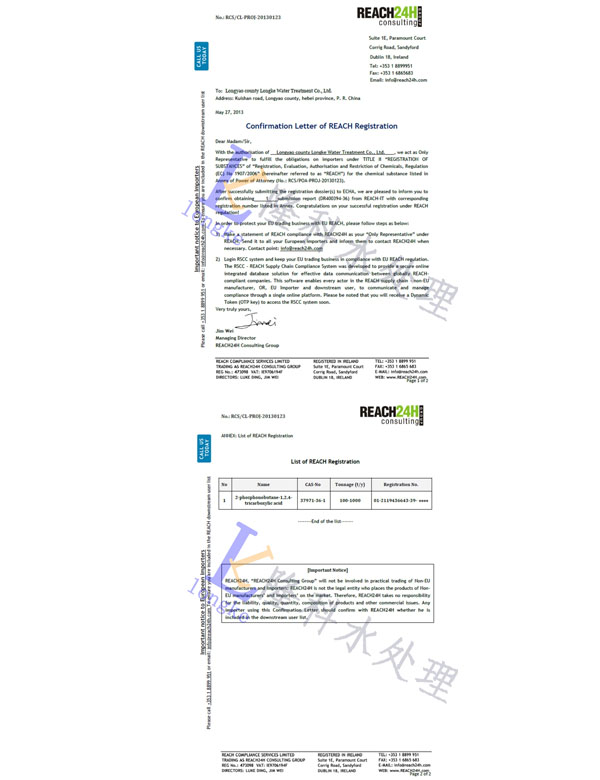Exploring the Versatile Applications of Cationic Polyacrylamide in Various Industries and Sectors
Uses of Cationic Polyacrylamide An Overview
Cationic polyacrylamide (CPAM) is a synthetic polymer that has garnered significant attention in various industries due to its unique properties and versatile applications. As a water-soluble polymer, CPAM is particularly noted for its ability to enhance coagulation, flocculation, and sedimentation processes. This article delves into the myriad uses of cationic polyacrylamide, highlighting its importance across several fields such as wastewater treatment, papermaking, oil recovery, and agriculture.
1. Wastewater Treatment
One of the primary applications of cationic polyacrylamide is in wastewater treatment. The cationic nature of the polymer allows it to effectively neutralize negatively charged particles in suspension, promoting their agglomeration and subsequent removal from water systems. In municipal and industrial wastewater treatment facilities, CPAM is used as a flocculant to enhance the sedimentation of suspended solids, leading to clearer effluent and improved water quality. This not only helps in compliance with environmental regulations but also optimizes the overall efficiency of the treatment process.
2. Papermaking Industry
In the papermaking industry, cationic polyacrylamide is utilized to improve the retention of filler materials and fibers, thus enhancing the strength and quality of the final paper product. The polymer acts by bridging the fibers and fillers together, which reduces the amount of raw materials needed and minimizes waste. Additionally, CPAM contributes to better drainage and filtration during the paper production process, improving production efficiency. Its use in this industry showcases its capability to enhance product quality while promoting sustainability through resource conservation.
3. Oil and Gas Industry
cationic polyacrylamide uses

Cationic polyacrylamide plays a critical role in the oil and gas industry, particularly in enhanced oil recovery (EOR) processes. Here, it is used as a viscosifying agent to improve the mobility of water injected into oil reservoirs. By increasing the viscosity of the water, CPAM helps to displace oil more effectively, thereby maximizing recovery rates. Furthermore, CPAM's ability to reduce friction in pipelines translates into significant energy savings and lower operational costs.
In agriculture, cationic polyacrylamide is employed primarily as a soil conditioner and water retention agent. By improving soil structure, CPAM enhances the soil's ability to retain water and nutrients, promoting better plant growth and increasing agricultural productivity. This is especially beneficial in arid regions, where water conservation is crucial. Additionally, CPAM can help to reduce soil erosion and promote the establishment of vegetation, contributing to environmental sustainability.
5. Other Applications
Apart from these major industries, cationic polyacrylamide finds applications in various other sectors. It is used in the production of cosmetics and personal care products, where its emulsifying and thickening properties are beneficial. In the textile industry, CPAM aids in dyeing processes by ensuring even distribution of dyes on fabrics. Furthermore, it is increasingly being explored for use in biomedicine, particularly in drug delivery systems due to its biocompatibility.
Conclusion
Cationic polyacrylamide is a multifunctional polymer that plays a pivotal role in diverse industries. Its ability to facilitate processes such as flocculation, water retention, and viscosity enhancement makes it indispensable in wastewater treatment, papermaking, oil recovery, and agriculture. As industries continue to focus on sustainability and efficiency, the use of CPAM is likely to expand, underlining its importance in modern applications. Continuous research and development in this field may reveal even more innovative uses for cationic polyacrylamide, ensuring its relevance for years to come.
-
Pbtc Scale InhibitorPBTC: A Scale Protector for Industrial Water TreatmentNewsAug.05,2025
-
Organic Phosphonate: An Efficient Defender in the Field of Scale InhibitionNewsAug.05,2025
-
Hydrolyzed Polymaleic Anhydride: Green Pioneer in Scale Inhibition FieldNewsAug.05,2025
-
PAPEMP Polyamino Polyether Methylene Phosphonic Acid For SaleNewsAug.05,2025
-
Flocculant Water Treatment: A Pioneer in Purification in the Field of Water TreatmentNewsAug.05,2025
-
Benzyl Isothiazolinone: An Efficient and Broad-Spectrum Antibacterial Protective GuardNewsAug.05,2025





